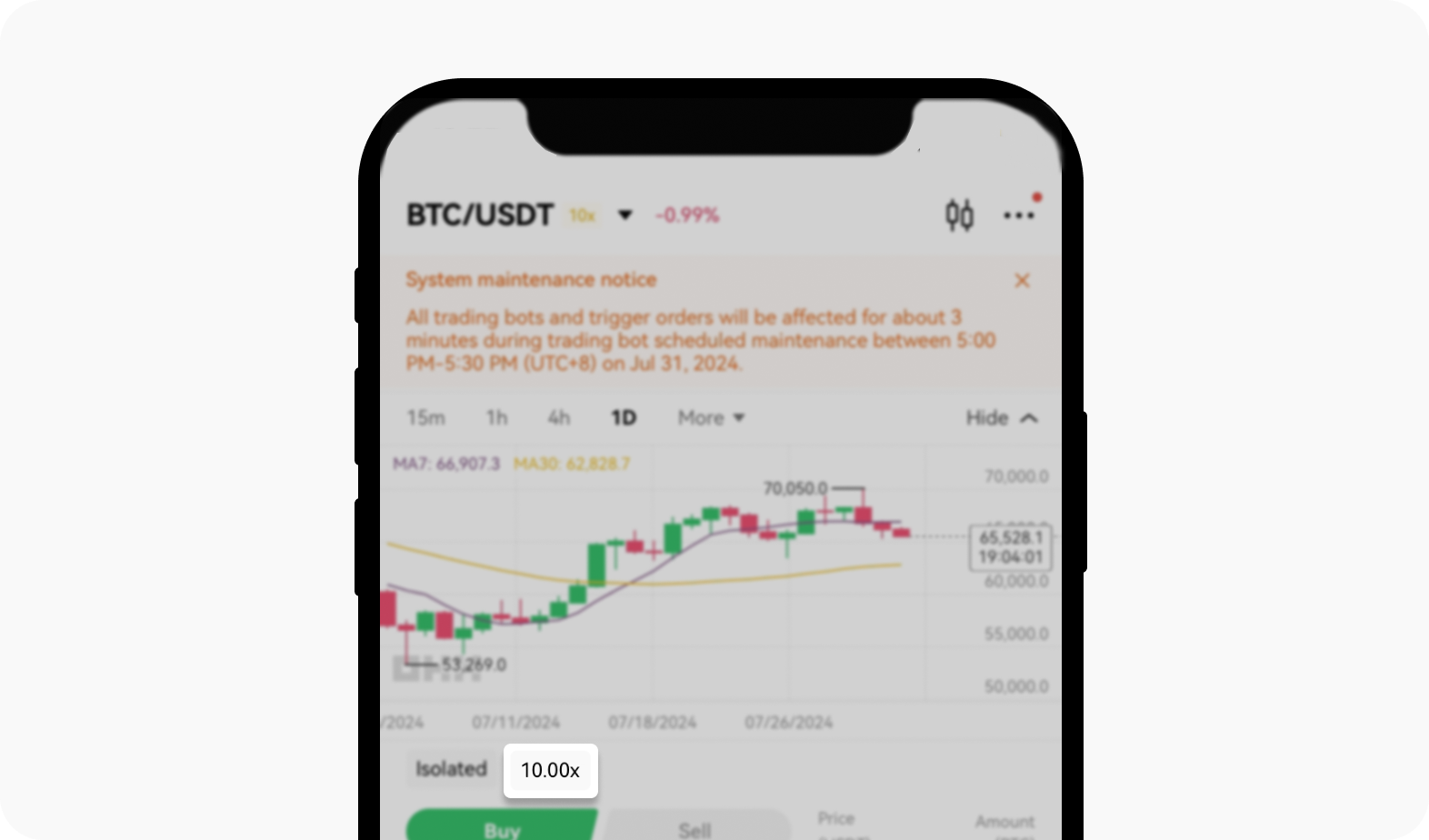How do I adjust leverage levels?
What's leverage?
Leverage allows you to borrow funds to trade larger positions than your account balance would typically permit. Essentially, leverage involves borrowing capital from the platform to increase your trading position. This can amplify both potential gains and potential losses.
When to use leverage?
When using leverage, it's crucial for traders to have a solid understanding of their risk tolerance and to use risk management strategies, such as stop-loss orders, to protect against potential losses. With that in mind, using leverage offers several potential benefits:
Increased exposure: with leverage, you can control a larger position with a relatively smaller amount of capital.
Enhanced returns: leverage can amplify your returns if the market moves in your favor.
Capital efficiency: you can use less capital to achieve the same market exposure, freeing up funds for other investments or trades.
Diversification opportunities: with the ability to control more positions, leverage allows for broader market exposure and diversification within your portfolio.
Shorting opportunities: leverage enables short selling, allowing traders to potentially profit from falling markets.
How do I adjust the leverage level for a specific trade?
To adjust the leverage level:
Head over to the Trade section
Select Margin or Futures trading, depending on your trading preference
Select the asset or trading pair you wish to trade
Locate the leverage setting option, usually near the order form

The leverage level can be adjusted to the level that you prefer
Select the desired leverage level from the available options (for example, 5x, 10x, 20x, and more)
Confirm your choice and proceed to place your order
FAQ
Are there different leverage options for different assets or trading pairs?
Yes, leverage levels can vary depending on the asset or trading pair. More volatile assets may have lower maximum leverage limits to manage risk.
Can I change the leverage level after opening a position?
Once a position is open, you typically can't change the leverage level for that specific trade. To adjust leverage, you'd need to close the position and open a new one with the desired leverage.
What are the risks associated with leverage?
Leverage trading increases both potential gains and losses. It's crucial to understand the risks, as your losses can exceed your initial investment. Always use leverage responsibly and consider using risk management tools like stop-loss orders.
How's margin calculated for leveraged trades?
Margin requirements vary based on the leverage level and the asset's volatility. The initial margin is the amount you must deposit to open a leveraged position, and the maintenance margin is the minimum amount needed to keep the position open.
What happens if my margin falls below the maintenance level?
If your margin falls below the maintenance level, we may issue a margin call, requiring you to deposit additional funds. If you fail to meet the margin call, your position may be liquidated to prevent further losses.
Can I use cross margin and isolated margin on OKX?
Yes, we offer both cross margin and isolated margin options:
Cross Margin: uses the entire account balance to maintain positions, sharing the risk across multiple trades.
Isolated Margin: limits the margin to a specific trade, isolating the risk to that trade alone.
Visit here for more details on the margin options.
